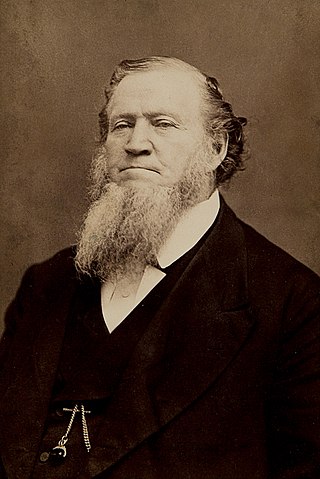
Brigham Young was an American religious leader and politician. He was the second president of the Church of Jesus Christ of Latter-day Saints, from 1847 until his death in 1877. During his time as church president, Young led his followers, the Mormon pioneers, west from Nauvoo, Illinois, to the Salt Lake Valley. He founded Salt Lake City and served as the first governor of the Utah Territory. Young also worked to establish the learning institutions which would later become the University of Utah and Brigham Young University. A polygamist, Young had at least 56 wives and 57 children. He instituted a ban prohibiting conferring the priesthood on men of black African descent, and led the church in the Utah War against the United States.

Mormonism is the religious tradition and theology of the Latter Day Saint movement of Restorationist Christianity started by Joseph Smith in Western New York in the 1820s and 1830s. As a label, Mormonism has been applied to various aspects of the Latter Day Saint movement, although there has been a recent push from the Church of Jesus Christ of Latter-day Saints to distance themselves from this label. A historian, Sydney E. Ahlstrom, wrote in 1982, "One cannot even be sure, whether [Mormonism] is a sect, a mystery cult, a new religion, a church, a people, a nation, or an American subculture; indeed, at different times and places it is all of these." However, scholars and theologians within the Latter Day Saint movement, including Smith, have often used "Mormonism" to describe the unique teachings and doctrines of the movement.

Polygamy was practiced by leaders of the Church of Jesus Christ of Latter-day Saints for more than half of the 19th century, and practiced publicly from 1852 to 1890 by between 20 and 30 percent of Latter-day Saint families. Today, various denominations of fundamentalist Mormonism continue to practice polygamy.
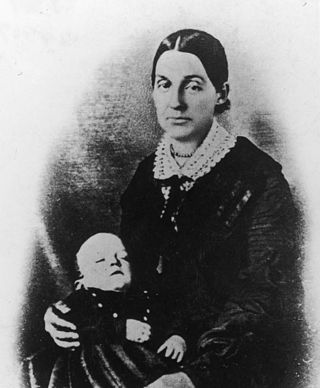
Emma Hale Smith Bidamon was an American homesteader, the official wife of Joseph Smith, and a prominent leader in the early days of the Latter Day Saint movement, both during Smith's lifetime and afterward as a member of the Reorganized Church of Jesus Christ of Latter Day Saints. In 1842, when the Ladies' Relief Society of Nauvoo was formed as a women's service organization, she was elected by its members as the organization's first president.
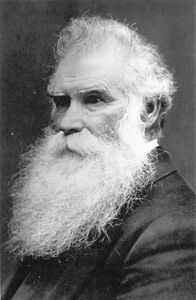
Orson Pratt Sr. was an American mathematician and religious leader who was an original member of the Quorum of the Twelve Apostles of the Church of Christ. He became a member of the Quorum of the Twelve of the Church of Jesus Christ of Latter-day Saints and was a leading Mormon theologian and writer until his death.

Jason William Briggs was a leader in the early history of the Latter Day Saint movement and was instrumental in bringing about the 1860 "Reorganization" of the church, which resulted in the establishment of the Reorganized Church of Jesus Christ of Latter Day Saints.

Celestial marriage is a doctrine that marriage can last forever in heaven. This is a unique teaching of the Church of Jesus Christ of Latter-day Saints or Mormonism, and branches of Mormon fundamentalism.

Polygamy in the Church of Jesus Christ of Latter Day Saints, or plural marriage, is generally believed to have originated with the founder of Mormonism, Joseph Smith. According to several of his associates, Smith taught that polygamy was a divine commandment and practiced it personally, by some accounts marrying more than 30 women, some of whom had existing marriages to other men. Evidence for Smith's polygamy is provided by the church's "sealing" records, affidavits, letters, journals, and diaries. However, until his death, Smith and the leading church quorums denied that he preached or practiced polygamy. Smith's son Joseph Smith III, his widow Emma Smith, and the Reorganized Church of Jesus Christ of Latter Day Saints challenged the evidence and taught that Joseph Smith had opposed polygamy. They instead claimed that Brigham Young, the head of the Church of Jesus Christ of Latter-day Saints, introduced plural marriage after Smith's death. In 1852, leaders of the Utah-based LDS Church publicly announced the doctrine of polygamy.

Zina Diantha Huntington Young was an American social activist and religious leader who served as the third general president of the Relief Society of the Church of Jesus Christ of Latter-day Saints from 1888 until her death. She practiced polyandry as the wife of Joseph Smith, and later Brigham Young, each of whom she married while she was still married to her first husband, Henry Jacobs. She is among the most well-documented healers in LDS Church history, at one point performing hundreds of washing, anointing, and sealing healing rituals every year. Young was also known for speaking in tongues and prophesying. She learned midwifery as a young girl and later made contributions to the healthcare industry in Utah Territory, including assisting in the organization of the Deseret Hospital and establishing a nursing school. Young was also involved in the women's suffrage movement, attending the National Woman Suffrage Association and serving as the vice president of the Utah chapter of the National Council of Women.

Spiritual wifery is a term first used in America by the Immortalists in and near the Blackstone Valley of Rhode Island and Massachusetts in the 1740s. The term describes the idea that certain people are divinely destined to meet and share their love after receiving a spiritual confirmation, and regardless of previous civil marital bonds. Its history in Europe among various Christian primitivistic movements has been well documented. The followers of Jacob Cochran as early as 1818 used "spiritual wifery" to describe their religious doctrine of free love. Often confused with polygamy, spiritual wifery among the Cochranites was the practice in which communal mates were temporarily assigned and reassigned, either by personal preference or religious authority.
The teachings of Joseph Smith include a broad spectrum of religious doctrines as well as political and scientific ideas and theories, many of which he said were revealed to him by God. Joseph Smith is the founder of the Latter Day Saint movement and is recognized by multiple Latter Day Saint churches as the founder. Beginning in 1828, Smith began dictating the text of what later became the Book of Mormon, and also began dictating written revelations he said were inspired by God.
Sexuality has a prominent role within the theology of the Church of Jesus Christ of Latter-day Saints, which teaches that gender is defined in the premortal existence, and that part of the purpose of mortal life is for men and women to be sealed together, forming bonds that allow them to progress eternally together in the afterlife. It also teaches that sexual relations within the framework of opposite-sex marriage are healthy, necessary, and ordained of God.

The Seer was an official periodical of the Church of Jesus Christ of Latter-day Saints which first appeared in 1853 and was published throughout 1854.
Search for the Truth is an anti-Mormon video produced by Tri-Grace Ministries. The video begins with the claim that Jesus Christ and Joseph Smith were "two of the world's most prominent and influential men." It then presents what it claims to be the teachings of Joseph Smith and contrasts them to what it claims to be the teachings of Jesus Christ. A question is raised regarding whether the movements which the video classifies as "Christianity" and "Mormonism" are compatible, despite the claim by both that "Jesus is the Christ." The video takes portions of the Book of Mormon and compares it to the Bible. The video implies that people must follow Jesus or Joseph Smith but cannot follow both.

Joseph Smith, the founder of the Latter Day Saint movement, privately taught and practiced polygamy. After Smith's death in 1844, the church he established splintered into several competing groups. Disagreement over Smith's doctrine of "plural marriage" has been among the primary reasons for multiple church schisms.
In the Church of Jesus Christ of Latter-day Saints, marriage between a man and a woman is considered to be "ordained of God". Marriage is thought to consist of a covenant between the man, the woman, and God. The church teaches that in addition to civil marriage, which ends at death, a man and woman can enter into a celestial marriage, performed in a temple by priesthood authority, whereby the marriage and parent–child relationships resulting from the marriage will last forever in the afterlife.
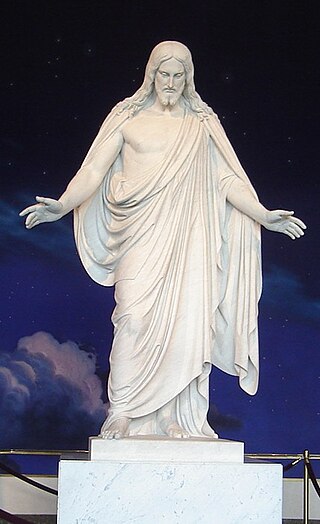
The following outline is provided as an overview of and a topical guide to the Church of Jesus Christ of Latter-day Saints.
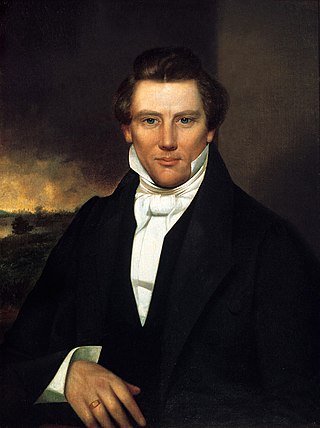
The following outline is provided as an overview of and topical guide to the life and influence of Joseph Smith:











